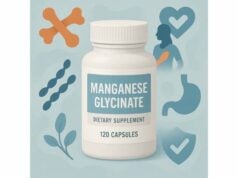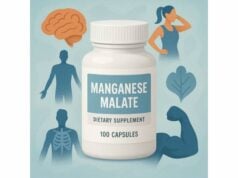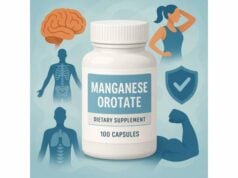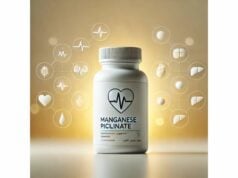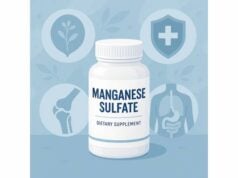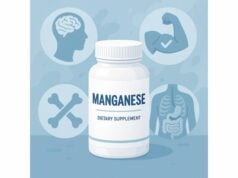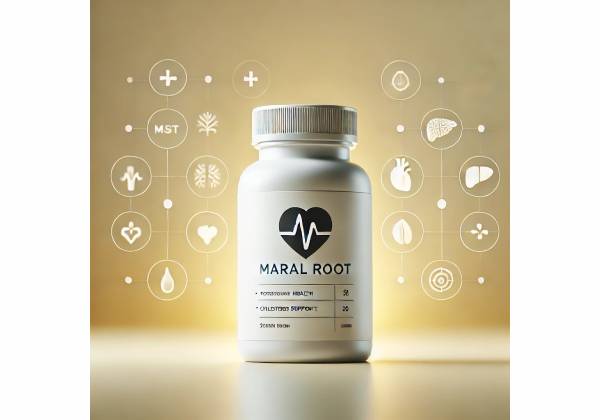
Maral root (Rhaponticum carthamoides, also known as Russian leuzea) is a hardy alpine herb long used across Siberia and Central Asia to combat fatigue, support recovery after illness, and strengthen physical endurance. Today it appears in sports nutrition and “adaptogen” formulas because its roots naturally concentrate phytoecdysteroids—especially 20-hydroxyecdysone (20E)—alongside flavonoids and phenolic acids. Early laboratory work suggests these compounds may help muscles respond better to training, buffer oxidative stress, and aid metabolic balance. Small human trials and modern pharmacokinetic studies provide cautious support for performance and safety, but results are mixed and product quality varies widely.
This guide translates the science into practical advice: what maral root is, how it may work, what benefits are realistic, how to choose a quality extract, and how to use it safely. You will also find a concise dosage framework, safety red flags, and a buyer’s checklist that helps you avoid under-dosed or mislabeled products. If you are considering maral root to complement training, recovery, or healthy aging, the following sections give you clear, actionable steps built on the best available evidence.
Quick Overview
- May support training adaptations and recovery by providing 20-hydroxyecdysone and antioxidant polyphenols.
- Early human data point to improved strength metrics with standardized ecdysteroid extracts; effects are modest and depend on training.
- Typical supplemental range: 200–400 mg/day of a standardized extract providing 100–300 mg 20-hydroxyecdysone, for 6–8 weeks.
- Safety caveat: can lower blood glucose and blood pressure; monitor if you use related medications or have underlying conditions.
- Avoid if pregnant or breastfeeding, or if you have hormone-sensitive cancers or are awaiting sports anti-doping guidance.
Table of Contents
- What is maral root and how it works
- Evidence-backed benefits: what to expect
- How to use it: forms and prep
- Dosage: how much and when
- Safety, side effects, and who should avoid
- Quality checks and buying guide
What is maral root and how it works
Botanical profile. Maral root (Rhaponticum carthamoides) is a perennial from the Asteraceae family native to Siberia, Mongolia, and parts of Kazakhstan. Traditional healers used decoctions and tinctures from the root and rhizome to restore vigor, appetite, and resilience after illness or heavy labor. In the 20th century it was studied in Eastern Europe as a physical performance tonic.
Active compounds. The root contains:
- Phytoecdysteroids (notably 20-hydroxyecdysone, sometimes called ecdysterone), plant sterols structurally distinct from human androgens.
- Flavonoids and phenolic acids (e.g., caffeoylquinic acids) with antioxidant and anti-inflammatory activity.
- Minor constituents including essential oil components and polysaccharides.
How it may work (mechanistic overview).
- Skeletal muscle signaling: 20E appears to influence muscle protein turnover by modulating pathways linked to muscle remodeling and proteolysis. Unlike anabolic steroids, 20E does not bind the androgen receptor; proposed activity involves alternative receptors and downstream signaling that may enhance training responses when combined with progressive overload.
- Mitochondrial and metabolic effects: In cell and animal models, 20E can increase markers of mitochondrial biogenesis and improve glucose and lipid handling, potentially supporting endurance and recovery in trained individuals.
- Antioxidant and cytoprotective actions: Maral root polyphenols scavenge reactive oxygen species and may attenuate exercise-induced oxidative stress. Less oxidative damage can mean better recovery between sessions, especially during high-volume training blocks.
- Adaptogenic profile: Historically classified among adaptogens, maral root is thought to help maintain homeostasis under stressors (training, altitude, cold). Modern definitions focus on normalizing stress-response systems without overstimulation; maral root’s balancing effect on fatigue perception and resilience is consistent with this.
What it is not.
- Not a substitute for training, sleep, and nutrition.
- Not an anabolic steroid and not a shortcut to rapid hypertrophy.
- Not a single-target drug; benefits, when present, are usually incremental and context-dependent.
Bottom line. Maral root offers a multi-compound matrix with plausible mechanisms for recovery and training adaptation, led by standardized 20E. The strength of evidence is growing but remains modest; quality of the extract and alignment with a sound training program largely determine outcomes.
Evidence-backed benefits: what to expect
Strength and training adaptations. A controlled human trial of resistance-trained adults using daily ecdysteroid supplementation over a 10-week program reported greater increases in lean mass and bench press performance compared with placebo. The effect size was meaningful but not dramatic, and results depended on adherence to structured progressive overload. Subsequent discussions in sports science emphasized that benefits appear when an extract provides a verifiable dose of 20E and when training stimulus is sufficient.
Recovery and muscle protection. Short-term multiple-dose clinical pharmacology work with purified 20E (BIO101) observed favorable changes in muscle damage biomarkers (for example, myoglobin and CK-MB reductions relative to baseline) at higher repeated doses over two weeks in older adults. While these are lab markers—not performance outcomes—they support a “recovery-support” signal that merits longer trials.
Endurance and perceived exertion. Athletes anecdotally report improved repeat-effort capacity and steadier energy during high-volume weeks. Mechanistically, improved mitochondrial dynamics and glucose uptake in preclinical models could translate to slightly better endurance economy, particularly when combined with carbohydrate availability and adequate iron status. Human endurance data remain preliminary, so set expectations accordingly.
Glycemic and metabolic support. In vitro and animal studies indicate that 20E can enhance insulin sensitivity and improve lipid profiles via signaling pathways that upregulate glucose transporters and influence hepatic lipid metabolism. In people with normal metabolism, any effect is likely small; those with dysglycemia should monitor glucose closely if they choose to use maral root.
Cognitive resilience and fatigue. Traditional use emphasizes mental stamina and fatigue resistance. While robust human cognitive studies are lacking, the adaptogenic profile and indirect effects (better sleep quality when recovery is improved, less post-training soreness) may contribute to steadier focus during demanding training cycles.
Skin and wound applications (topical). Small laboratory studies suggest antimicrobial and anti-inflammatory actions of ecdysteroids and phenolics. In practice, topical maral root is uncommon; other botanicals have stronger clinical backing for skin.
Who benefits most.
- Trained individuals following a progressive strength program seeking marginal gains in lean mass and strength over 6–10 weeks.
- Masters athletes focusing on recovery and maintenance of muscle quality.
- People managing high training loads who want an adaptogen-style buffer, provided they screen for medication interactions.
What to expect in real life. If your program, protein intake, and sleep are on point, a quality maral root extract standardized for 20E may nudge performance and recovery forward. Expect incremental differences—not transformations—and track with simple metrics: reps at a fixed load, bar speed, session RPE, soreness, and sleep.
How to use it: forms and prep
Supplement forms.
- Standardized capsules/tablets: The most reliable option. Look for labeling that states 20-hydroxyecdysone (20E) content per serving (for example, “250 mg extract standardized to 40% 20E = 100 mg 20E”).
- Tinctures and liquid extracts: Traditional, but dosing of 20E is difficult to verify. Best reserved for experienced users who can obtain a certificate of analysis (CoA).
- Powders: Cost-effective, but purity and stability vary. Use only if the supplier provides third-party testing.
- Blends (“adaptogen complexes”): Often under-dosed for 20E and padded with cheaper herbs. Choose single-ingredient products when learning your response.
Standardization matters. The research signal is tied to measured 20E intake, not just total maral root mass. Two products both labeled “500 mg maral root” can differ tenfold in active content. Prioritize brands that quantify 20E and provide batch-specific CoAs.
Timing.
- On training days: Split doses around training (e.g., morning and early afternoon), or take pre-training if using a single daily dose.
- On rest days: Maintain the same total daily amount, split for steadier plasma levels.
- With or without food: 20E is orally bioavailable; taking with a mixed meal may reduce any mild GI upset.
Stacking.
- Works well with creatine monohydrate (3–5 g/day), protein (1.6–2.2 g/kg/day), and omega-3s (1–2 g EPA+DHA/day) for a comprehensive strength-and-recovery base.
- Avoid stacking with unverified “hormonal boosters” or stimulants that complicate sleep and recovery.
Cycling. Many athletes use 6–8 weeks on, followed by 4 weeks off to reassess training status and baseline performance. Cycling also helps you evaluate whether the extract truly moved the needle.
Tracking response (simple protocol).
- Before starting: log bodyweight, two compound lifts (1RM or estimated 1RM), and three performance markers (e.g., reps at 70% 1RM, session RPE, 24-h DOMS, sleep quality).
- During weeks 2, 4, 6: repeat markers at matched training loads.
- At week 8: compare to baseline. If there’s no clear advantage (e.g., bar speed, reps at a given load, less soreness), discontinue and redirect budget to proven basics.
Dosage: how much and when
Practical daily range.
- Standardized extracts: A common approach is 200–400 mg/day of maral root extract providing ~100–300 mg/day of 20-hydroxyecdysone, used for 6–8 weeks alongside structured training.
- Purified 20E preparations: Clinical pharmacology has tested single doses from 100 to 1400 mg and multiple doses of 350–900 mg/day over 14 days in older adults with favorable safety signals. These are investigational contexts; consumer products should stay on the conservative side.
Dosing examples (if the label is clear).
- If your capsule is 250 mg at 40% 20E, that equals 100 mg 20E per capsule. Two–three capsules/day deliver 200–300 mg 20E.
- If your tincture states 1 mL = 50 mg 20E, then 2–5 mL/day provides 100–250 mg 20E. Verify with a recent CoA.
When to adjust lower.
- You are new to resistance training (novices adapt quickly without extras).
- You are sensitive to herbal products or take medications that affect blood sugar or blood pressure.
- You experience GI upset—reduce to the last well-tolerated dose.
When (possibly) to adjust higher.
- You weigh >100 kg and tolerate the standard range well.
- You are in a short, high-stress training block and want to test the upper standard (e.g., 300 mg 20E/day) for 2–4 weeks.
Duration. Most users evaluate over 6–8 weeks to align with mesocycles. There’s no evidence for continuous, year-round use; periodic breaks help you assess true value.
Missed doses. Skip and resume on your normal schedule. There’s no need to double up.
Hydration and nutrition. The best results still come from adequate calories and ~0.7–1.0 g protein per pound of bodyweight. Supplements amplify good programs; they can’t rescue poor ones.
Safety, side effects, and who should avoid
Overall safety picture. Modern human studies with purified 20E report good short-term tolerability across single and multiple dosing, with mostly mild, transient adverse events (for example, GI discomfort). In exercise trials, routine lab markers for liver and kidney function remained within normal ranges.
Possible side effects.
- GI upset (nausea, cramping) when starting or with high single doses.
- Headache or lightheadedness in those prone to low blood pressure.
- Lowered blood glucose in susceptible individuals; monitor if you use insulin or oral hypoglycemics.
- Allergic reactions are rare but possible with Asteraceae plants.
Drug and condition cautions.
- Diabetes or prediabetes: Monitor glucose closely; consider lower starting doses and involve your clinician.
- Hypertension treated with medication: Watch for additive blood-pressure lowering.
- Hormone-sensitive cancers: Avoid without oncologist approval; while 20E is not an androgen, receptor cross-talk is being studied and caution is warranted.
- Kidney or liver disease: Use only with medical oversight.
- Pregnancy and breastfeeding: Avoid—safety data are insufficient.
- Competitive athletes: Ecdysteroids are on anti-doping monitoring lists in sports. While maral root is not prohibited, testing methods can detect 20E and metabolites in urine. If you are subject to testing, consult your federation’s latest guidance and your team physician before use.
When to stop and seek care.
- Persistent dizziness, marked hypotension, hypoglycemic symptoms, rash, or breathing difficulty.
- Abnormal lab results (liver enzymes, kidney markers) after starting a new product.
- Any sign of interaction with prescription drugs (for example, unexpected hypoglycemia).
Responsible use checklist.
- Choose products with quantified 20E and third-party testing.
- Start at the low end of the range and titrate.
- Cycle and reassess rather than using indefinitely.
- Log training, recovery, and any side effects.
Quality checks and buying guide
1) Verify standardization and dose transparency.
Look for labels that clearly state mg of 20-hydroxyecdysone per serving. Avoid vague terms like “potent ecdysteroid complex” without numbers.
2) Demand a recent certificate of analysis.
A reputable brand will provide a batch-specific CoA showing:
- Identity testing of R. carthamoides (not generic “Leuzea species”).
- Assay for 20E (HPLC/LC-MS).
- Limits for heavy metals, pesticides, and microbial contamination.
- Absence of prohibited anabolic agents (important for tested athletes).
3) Recognize common pitfalls.
- Under-dosed blends: Maral root listed last in a long proprietary mix is unlikely to deliver meaningful 20E.
- Mislabeled species: Some products use Ajuga turkestanica or Cyanotis vaga as cheaper sources of ecdysteroids; these are different plants with different profiles.
- Inconsistent potency: Plant sterol content varies by geography, harvest time, and processing; standardized extracts reduce variability.
4) Prefer encapsulated extracts over raw powders.
Standardized extracts ensure a predictable intake of 20E. Powders often degrade faster and can be unevenly dosed unless rigorously tested.
5) Storage and stability.
Keep sealed in a cool, dry place away from direct light. Close caps promptly; moisture and heat degrade sensitive constituents.
6) Ethical and sustainable sourcing.
Wild-harvest pressure exists in some regions. Favor producers who disclose cultivation practices or sustainable wildcrafting and who comply with GMP standards.
7) Self-testing protocol (four steps).
- Baseline: Two weeks before starting, track lifts, bar speed or reps at a set load, and sleep (subjective scale).
- Introduce: Start at ~100–150 mg/day 20E equivalent for one week.
- Evaluate: If well tolerated, titrate to ~200–300 mg/day 20E equivalent for 5–7 weeks.
- Off-cycle: Take four weeks off and compare metrics. Keep what clearly helps; drop what doesn’t.
8) Budgeting.
A high-quality, standardized product costs more. If you must choose, prioritize creatine, protein, and sleep before layering maral root.
References
- Ecdysteroids as non-conventional anabolic agent: performance enhancement by ecdysterone supplementation in humans 2019 (Controlled Trial)
- A Phase 1 study for safety and pharmacokinetics of BIO101 (20-hydroxyecdysone) in healthy young and older adults 2023 (Clinical Pharmacology)
- The Ethnopharmacological Uses, Metabolite Diversity, and Pharmacological Activities of the Genus Rhaponticum and Leuzea 2022 (Systematic Review)
- Ecdysterone and Turkesterone—Compounds with Emerging Therapeutic Potential? A One Health Approach 2022 (Review)
- Urinary Elimination of Ecdysterone and Its Metabolites Following Administration of 20-Hydroxyecdysone-Containing Products 2021 (Analytical/Anti-Doping)
Disclaimer
This content is for educational purposes only and is not a substitute for professional medical advice, diagnosis, or treatment. Always talk with your healthcare provider before starting any new supplement, especially if you have a medical condition, take prescription medications, are pregnant, or compete in tested sports. If you experience adverse effects, stop use and seek medical guidance.
If you found this helpful, please consider sharing it on Facebook, X (formerly Twitter), or your preferred platform, and follow us for more evidence-based guides. Your support helps us keep creating quality content.

